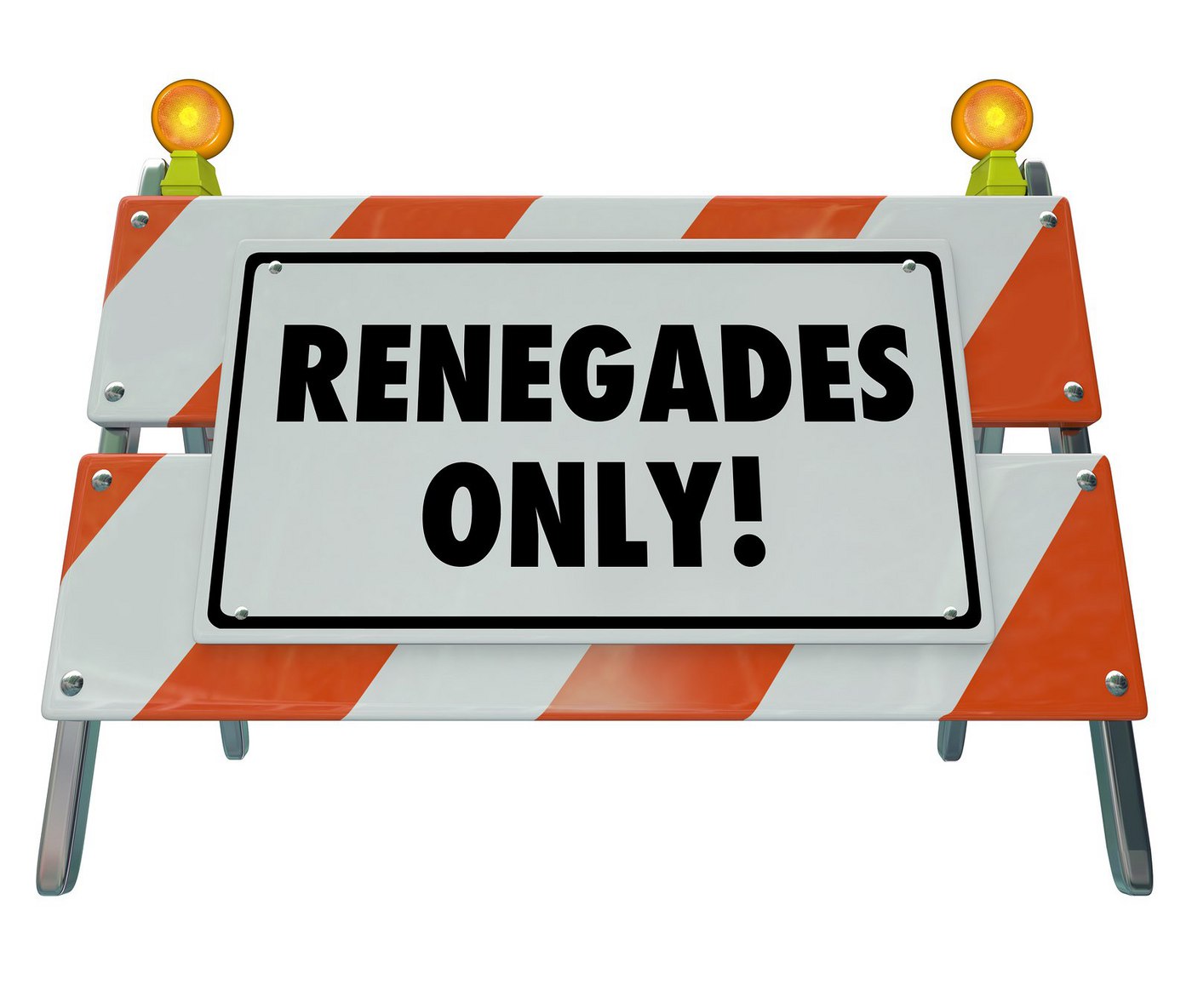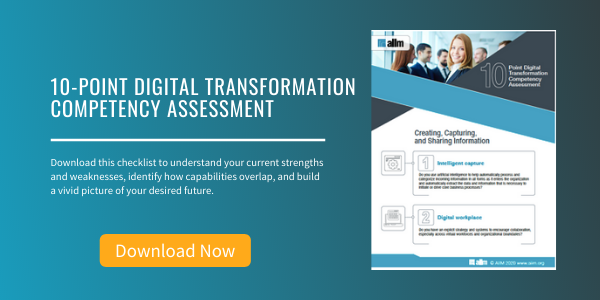
A Manifesto for Associations to Survive Disruption
As many of you know, over the past few months, I have voiced some concerns about the match between technology strategies, AMS (Association Management Systems) capabilities, and the need for CEOs to get engaged and own their organization’s technology strategies.
You may recall my somewhat hyperbolic e-book, “The AMS as We Know it is Dead,” likening our AMS systems to the German word EierLegendeVollMicheSau, the fictional perfect farm animal, uniting the qualities of chickens (laying eggs), sheep (producing wool), cows (giving out milk) and pigs (can be turned into bacon).

Those of us who have been around awhile remember all the tumult when the Internet originally intersected with associations. Those that were really tuned in back then may remember a company called VerticalNet, one of the most famous bubbles in the overall Internet bubble (eventually reaching a theoretical valuation of $12 billion!), and conversations about associations being "roadkill on the information superhighway."
Well, while a lot of change occurred, massive roadkill did not, and most associations lived to fight another day. We adjusted, often making dramatic changes to our business models and dramatic changes in where we placed the “toll booths” to create a sustainable financial base.
Lest we get too comfortable, I think the disruption we saw in Chapter One of the story of the Internet and Associations is just that – Chapter One. At the risk of being accused of being Chicken Little, I think the disruption that is coming in Chapter Two of the Internet and Associations is far more profound and far more disruptive.
I recently spoke to the Association Forum of Chicagoland about the challenge of the disruptive times we are in, and how we can turn the tables and convert Information Chaos into Information Opportunity.
Let me lay out some of my assumptions about how the next five years will be far more disruptive to associations than what we experienced in Chapter One.
My 9-Point Manifesto to Survive Disruption
1 -- There is a shakeout coming in the association space.
2 -- The associations that are currently financially sustainable have at their core:
- a professional certification that is a necessary ticket to be in that profession (i.e., you MUST have it to do your job);
- a big trade show; and/or
- a clear policy enemy or objective.
3 -- Everyone else is essentially in the a) networking, b) training, or c) content development/delivery business.
4 -- All of the items in #3 are in the midst of accelerating disintermediation from the web and social technologies. Thinking about each of these…
- Networking by itself will not survive as a differentiated benefit for associations in the face of consumer-grade social technologies. Networking is much more easily accomplished – in terms of usability, scale, and at no cost – on Facebook or LinkedIn than it is on the leading association platforms. This carries risk – just Google LinkedIn and “Site-Wide Auto-Moderation” for an example of the perils of relying on a platform you do not control – but ultimately thinking we can set up walled gardens just for “networking” is unsustainable.
- Training is in the midst of a massive change upsetting the traditional monopoly of associations. Association training businesses are being challenged from the bottom by YouTube and user-generated content and from the high end by for-profit competitors like Lynda.com. Lynda.com is now a $150+ million business after venture capital infusions of $103M and $150M in the past 3 years. They are moving from individual training to enterprise training and from stand-alone training to training linked to assessment (quasi-certification). They have higher production values than an association could ever hope to replicate at scale, with course paths and combinations generated dynamically based on customer needs, and with association-like networking and engagement of class participants a top future priority. I just recorded a course with them on Digital Transformation, and I can tell you most associations cannot hold a candle to the sophistication that Lynda.com brings to the creation of training content.
- Content development and delivery are occurring everywhere and by anyone, without the traditional overhead of an association, archaic business models (print), and byzantine committee approval processes. Content delivery is largely dependent on CMS/WCM platforms.
5 -- My conclusion: Each of these individual value propositions – networking, training, and content -- is not a sustainable value proposition for most associations.
6 -- I believe there IS a source of sustainable value, though, and that associations can do better than anyone else. The only source of sustainable advantage for most associations is to do ALL of these, with adult supervision, curated to the needs of a particular community.
7 -- The problem is the capabilities of the systems we use to currently do the above are not sufficient to deliver an integrated and curated experience:- Our community platforms, while excellent at community (albeit with a somewhat clunky user experience) and with the benefit of a rich experience of integration with the major AMS platforms, are: 1) not connected with the training experiences we deliver through LMS solutions, and 2) are not strong enough to operate as a CMS and thus operate as a segregated community ghetto independent of the rest of an association’s content.
- Most LMS solutions are great in delivering learning experiences, but terrible at connecting/engaging the participants and at connecting with non-training content. There are also not powerful enough on their own to act as a CMS solution to run an overall website.
- CMS solutions don’t have LMS capabilities, and while their community capabilities are developing, they lack experience at connecting to the AMS solutions that are still at the heart of how we are managing membership and transactional processes.
8 -- These 3 capabilities – community, LMS, and CMS – are converging, but they are not yet there. And the required expertise to connect them all into a seamless experience is beyond the reach of most associations.
9 -- A platform that does this and can do so as a turnkey solution – and preferably in the cloud as a SaaS solution -- has the potential to become the defacto standard for a host of associations, and the way for many associations to navigate the challenging times ahead. Requirements of this platform:
- Community is not bolted on to the website as a separate ghetto; it IS the web site.
- All content visible to everyone, optimized for SEO, and navigable and findable via faceted search. Differentiated access to content based on either purchase or member status.
- Learning paths definable by combinations of modular assets – including non-training assets – and with mastery measured by assessment engine tied to certificates.
So let the conversation begin. Am I a Genius, a Nut, or just plain Cranky?
About John Mancini
John Mancini is the President of Content Results, LLC and the Past President of AIIM. He is a well-known author, speaker, and advisor on information management, digital transformation and intelligent automation. John is a frequent keynote speaker and author of more than 30 eBooks on a variety of topics. He can be found on Twitter, LinkedIn and Facebook as jmancini77. Recent keynote topics include: The Stairway to Digital Transformation Navigating Disruptive Waters — 4 Things You Need to Know to Build Your Digital Transformation Strategy Getting Ahead of the Digital Transformation Curve Viewing Information Management Through a New Lens Digital Disruption: 6 Strategies to Avoid Being “Blockbustered” Specialties: Keynote speaker and writer on AI, RPA, intelligent Information Management, Intelligent Automation and Digital Transformation. Consensus-building with Boards to create strategic focus, action, and accountability. Extensive public speaking and public relations work Conversant and experienced in major technology issues and trends. Expert on inbound and content marketing, particularly in an association environment and on the Hubspot platform. John is a Phi Beta Kappa graduate of the College of William and Mary, and holds an M.A. in Public Policy from the Woodrow Wilson School at Princeton University.



